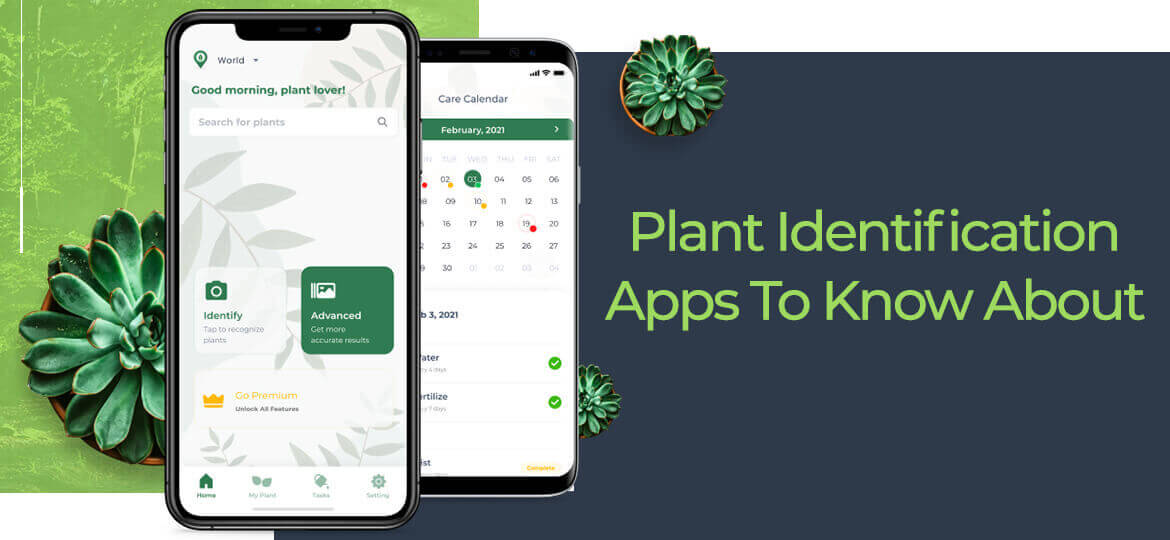Quick Summary
Have you heard about plant identification apps? Yes exactly, apps that tell you about plant’s name, it’s properties, care tips and much more with the help of a photo. This blog will tell you all about plant identifying apps, what are the features of plant identifier apps, how does it work and more.
Plant Identification App Development Guide 2025: How to Build AI-Powered Android & iOS Apps for the USA Market
The plant identification app industry in the USA has evolved rapidly in 2025, fueled by innovations in artificial intelligence (AI), machine learning, AR/VR, and mobile app development. Today’s users expect smart mobile apps that not only identify plants instantly but also provide gardening tips, plant care reminders, sustainability advice, and e-commerce integrations.
For businesses, startups, and entrepreneurs, developing a plant identification app is no longer just about recognizing species—it’s about creating a digital ecosystem for plant lovers. From Android apps for gardeners to iOS apps for plant enthusiasts, the opportunities in this market are endless.
Why Plant Identification Apps Are Trending in 2025
Sustainability and Eco-Friendly Living: Millions of Americans are turning to gardening apps, plant care apps, and eco-tech mobile solutions to live greener.
AI-Powered Mobile Apps: Plant recognition accuracy has improved thanks to deep learning and neural networks.
Education Demand: Schools, universities, and research institutions in the USA are adopting digital biology apps for interactive learning.
USA Gardening Boom: The post-pandemic era has led to a surge in home gardening, indoor plant care, and landscape management apps.
E-commerce Growth: Plant apps now double as online stores for seeds, fertilizers, pots, and gardening tools.
Must-Have Features in a Plant Identification Mobile App
AI Plant Scanner – Use AI + image recognition for instant plant identification.
Plant Database – Detailed data on species, medicinal uses, toxicity, and care.
Gardening Tips & Tutorials – Personalized guides for USA-based climate and seasons.
Voice Search Integration – Hands-free queries like “What plant is this?” or “Best care tips for aloe vera.”
AR/VR Plant Care Tools – Immersive plant care walkthroughs.
Community & Social Sharing – A hub for plant lovers across the USA.
Smart Reminders – Notifications for watering, fertilizing, and seasonal care.
In-App Purchases – Seeds, pots, fertilizers, and plant-care accessories.
Cross-Platform Support – Seamless experience on iOS and Android devices.
Wearable Integration – Sync with smartwatches for plant care reminders.
Plant App Development Trends in 2025
AI & Deep Learning Models: High-accuracy recognition of thousands of plant species.
AR-Powered Training Apps: Virtual garden planners and plant care simulations.
Blockchain Records: Authentic plant species data for researchers and collectors.
Gamification: Rewards, plant-growing challenges, and leaderboards.
Eco-Commerce Apps: Integration with USA-based e-commerce stores for plant products.
Technology Stack for iOS & Android Plant Apps
iOS Development: Swift, SwiftUI, Core ML.
Android Development: Kotlin, Jetpack Compose, TensorFlow Lite.
Cross-Platform Apps: Flutter, React Native for cost-efficient development.
Backend Development: Firebase, AWS, Node.js, MongoDB.
AI & Machine Learning: TensorFlow, PyTorch, Core ML for plant recognition.
Cost of Plant Identification App Development in the USA (2025)
Developing a plant identification mobile app in 2025 can cost between $50,000 – $180,000 depending on:
Platform Choice: Native iOS apps, Android apps, or cross-platform solutions.
App Features: Basic recognition vs. advanced AI + AR/VR + e-commerce.
Design & UX: USA-focused, mobile-first user experience.
Compliance & Security: Data protection, GDPR, and USA privacy standards.
Cross-platform apps are budget-friendly, while native apps deliver higher speed and better integration with iOS and Android ecosystems.
Business Models for Plant Identification Apps in 2025
Freemium + In-App Purchases – Free app with premium features like plant health diagnosis.
Subscription Model – Recurring revenue via monthly or yearly plans.
Ad-Supported Apps – Monetize with USA-based ads from gardening and eco-brands.
E-commerce Integration – Sell seeds, fertilizers, gardening kits, and eco-products directly.
Affiliate Partnerships – Collaborate with local nurseries and online gardening platforms.
The right plant identification app can help you connect with nature, participate in a citizen science project, and accurately identify plants, trees, or even toxic plants that might be dangerous or invasive. These apps provide correct identifications for a wide variety of plant species, including flowering plants, plants trees, and flowers fruits, helping users understand plant biodiversity.
Fourteen Wirecutter staffers and their families tested seven ID apps (all of them available free of charge) across nine states, in both rural and urban locations, using Android and Apple phones. If you’re looking for an app to identify plants, such as a free plant identifier app or the best plant identification app for your needs, we’ve got recommendations for you.
If you simply want an identification app that will quickly and accurately identify plants, we recommend PlantNet Plant Identification. It’s available as a free plant identification app for Android and iOS. For those who want a plant identifier app that allows sharing findings with other experienced users—whether amateur or professional naturalists—we have a pick for that too.
For quick, accurate plant identifications from a simple-to-use app, we recommend PlantNet. Within five seconds, this tree identifier app was able to differentiate a downy-yellow violet from an eastern redbud, a weeping forsythia from a tall goldenrod, and a maple from an oak.
Unlike many other apps we tested, PlantNet is not cluttered with ads or sneaky pop-ups that pressure you to pay for extra features. Although it doesn’t offer as seamless a sharing experience as iNaturalist or provide as much plant background information as some other apps, PlantNet provides quick, easy identifying plants that our testers found consistently accurate.
Now that spring has arrived, more people will be spending time outside enjoying flowering plants and tending to their vegetable garden. Whether you’re trying to create the flower or food garden of your dreams, or simply need help identifying plants on your hike, a reliable plant identification app can be your best companion. Curious if the shiny leaf your loved one picked up was poison ivy or whether the houseplant your cat just chewed on might cause illness? These apps help you make informed decisions with ease.
With technological advancements like plant health apps, we’re brought closer to nature. These apps allow you to identify plants in seconds by analyzing a simple photo. Plant app free options like PlantNet make it possible for everyone, from plant enthusiasts to gardeners, to explore the world of plants.
This article will guide you through the best plant apps, including free options for identifying flowers, trees, and even diagnosing plant diseases. Whether you’re looking for a flower identifier, tree identification app, or a free plant identifier app, these tools make it easy to deepen your understanding of nature while keeping your gardening projects thriving.
Best Free Plant Identification App PlantNet
On our Android phone, PlantNet proved to be the fastest and most accurate plant identification app available. This free plant identifier impressed us with its speed, accuracy, and ease of use, making it one of the best apps to help identify plants and leaves on the go.
Cost: Free
Platforms Supported: iOS, Android, and web
Languages Supported: 45, including Arabic, Bulgarian, Chinese, Dutch, English, French, Greek, Italian, Japanese, Persian, Polish, Portuguese, Slovak, Spanish, and Turkish
Key Features: Collaborative user platform; searchable database with over 46,050 species and 45 floras; plants searchable by theme (world flora, invasive plants, useful plants, weeds, and plants found in Africa, Asia, Central America, Europe, North America, and Oceania-Pacific); plant identification enhanced by the ability to use geolocation (GPS).
What We Liked About It
PlantNet is a global plant biodiversity monitoring collaborative, part of a “citizen science project.” Launched in 2013, this leaf identification app allows both botanists and the general public to identify plants by simply taking a picture and uploading it for analysis, no matter where they are in the world. This feature makes it one of the most useful apps for making money if you’re in the business of plant identification and consultation.
The History and Sponsors of PlantNet
PlantNet was developed with the support of several French research institutes, including the French National Research Institute for Sustainable Development (IRD), the French Agricultural Research Centre for International Development (CIRAD), the National Institute of Agricultural Research (INRA), the French Institute for Research in Computer Science and Automation (INRIA), and the Tela Botanica network. The project is funded by the Agropolis Foundation.
Simple Setup and Insightful Guidance
Installing PlantNet on our Android phone was a breeze. After installation, the app offered us the option to follow its guided setup screens, which we chose to do for more accurate identifications. Setting up our account was quick and easy. Users can join various Groups based on shared interests or locations, adding to the app’s community feel. We joined a few groups that caught our interest—each of the top five PlantNet groups has more than 1,000 members, making it a vibrant and informative community.
With all these features, PlantNet stands out as not just a plant identification app, but also a comprehensive leaf recognition app that connects you with a global network of plant enthusiasts.
The Best Plant Identification Apps: A Comprehensive Guide PlantNet
In today’s digital age, identifying plants has never been easier. Thanks to the development of advanced plant identification apps, users can now accurately identify plants, trees, flowers, and even diagnose plant diseases right from their smartphones. Whether you’re an amateur gardener, a botany enthusiast, or part of a citizen science project, these apps are invaluable tools for exploring and preserving plant biodiversity. Below, we highlight the best plant identification apps, free and paid, that cater to different needs.
Why Use a Plant Identification App?
Plant identification apps leverage powerful AI technology and vast databases to provide correct identifications of various plant species. These tools are perfect for identifying plants in vegetable gardens, detecting toxic plants, and cataloging flowering plants or trees. They are designed to assist experienced users and beginners alike, offering a user-friendly interface to identify flowers, fruits, and even plant diseases.
Key Features to Look for in a Plant App
When choosing the best plant app, consider these essential features:
- Accuracy and Reliability: The ability to accurately identify plants is critical. Look for apps with high user ratings and verified databases for correct identifications.
- Database Diversity: A vast collection of kinds of plants, including flowering plants, trees, and shrubs, ensures better accuracy.
- Additional Tools: Features like a plant health app, tree identifier app, and tools for managing plant biodiversity add extra value.
- User Experience: A user-friendly and visually appealing interface ensures a seamless identification process for beginners and experts alike.
Top Plant Identification Apps of 2025
1. PictureThis
PictureThis is widely recognized as one of the best plant identification apps, offering a comprehensive database to identify plants, trees, and flowers. Its free plant identifier app version is perfect for casual users, while the premium plan caters to plant enthusiasts.
- Features:
- Accurate identification for flowers, fruits, and plants.
- Diagnosis of plant diseases.
- Guides for maintaining a healthy vegetable garden.
2. PlantNet
A citizen science project at its core, PlantNet relies on user-contributed data for plant identification. This app excels in identifying plants native to specific regions, making it ideal for nature conservation projects.
- Features:
- Free plant identification app with no ads.
- Contributions from experienced users ensure high accuracy.
- Focus on preserving plant biodiversity.
3. Seek by iNaturalist
Backed by iNaturalist, Seek is a user-friendly identification app that provides insights into local flora and fauna. Its tree identification app feature is especially useful for identifying plants in forests and urban settings.
- Features:
- AI-powered tools for accurate identification.
- Ideal for identifying plants and insects in real time.
- Perfect for citizen science projects and outdoor adventures.
4. LeafSnap
LeafSnap focuses on tree identification, using photos of leaves to identify plant species. Its detailed database includes flowering plants, trees, and shrubs.
- Features:
- High-quality images for reference.
- Free plant identifier app suitable for schools and education.
- Excellent for identifying trees and toxic plants.
5. FlowerChecker
FlowerChecker is a hybrid app that combines AI tools with human expertise. Users can upload photos of plants, flowers, or fruits, which are then reviewed by a team of botanists for accurate identification.
- Features:
- Perfect for identifying plants with complex structures.
- Ideal for users looking for correct identifications verified by experts.
Benefits of Plant Identifier Apps
- Enhancing Education: Apps to identify plants are perfect for teaching kids and adults about plant biodiversity and conservation.
- Supporting Gardening: Tools for identifying plants and diagnosing plant diseases are invaluable for maintaining healthy gardens.
- Social Media Engagement: Share your findings with visually appealing photos and identifications, perfect for platforms like Instagram.
- Promoting Citizen Science: Contribute to global projects by identifying and cataloging plants in your area.
How to Optimize Your Experience with Plant Apps
- Utilize Free Tools: Start with a free plant identification app to explore basic features before upgrading.
- Participate in Communities: Join forums and social groups to exchange knowledge with experienced users.
- Experiment with Features: Try apps with advanced tools like flower identification, tree identifier app capabilities, and plant health diagnostics.
7 Best Plant ID Apps To Find Plant Name
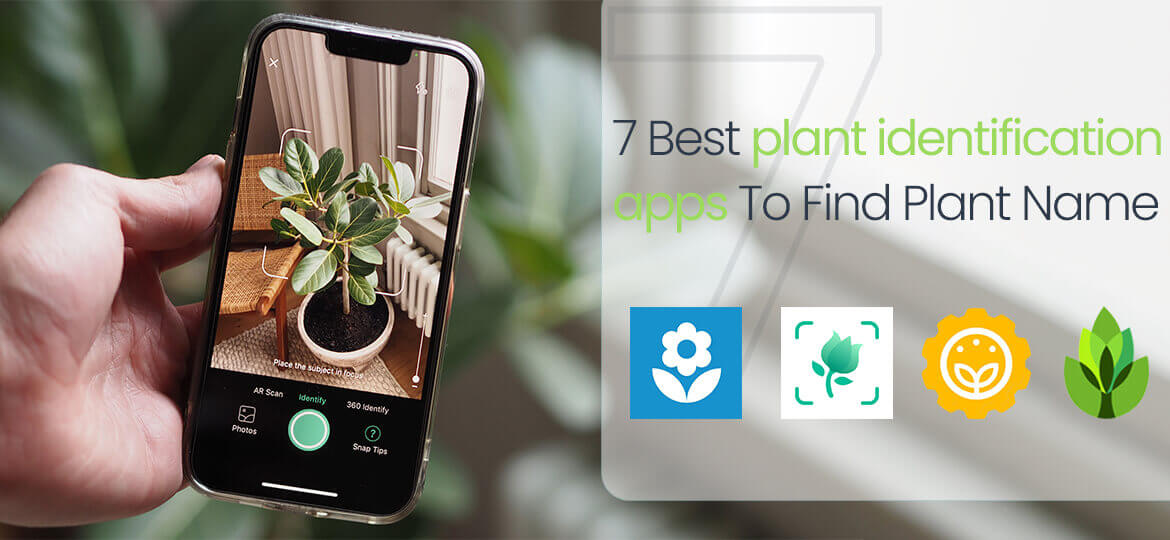
There are hundreds of thousands of different varieties of plants and flowers in the world.
Fortunately, modern technology has the ability to retain and process databases more widely. Plant identifier apps turn your smartphone into a one-stop destination to know all things about plants.
Therefore, if you often find yourself wondering about the wild wonders that decorate the world around you, here’s a list of the best plant identification application available today.
Agrobase – Plant Identification by Leaf
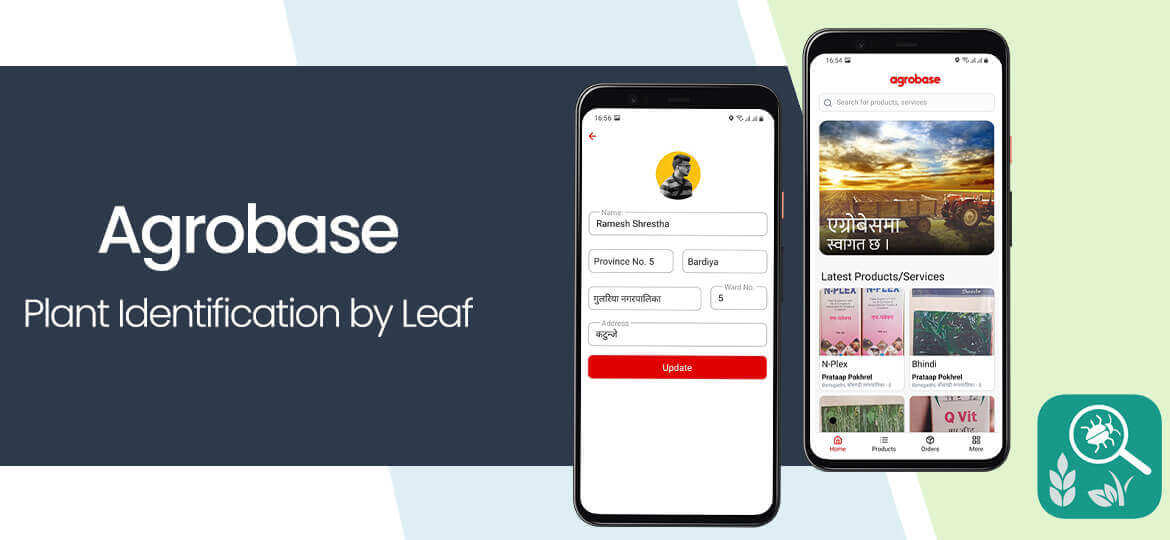
Agrobase is a very good plant identifier application for farmers and the like. It has an extensive database of plants, pests, weeds, and plant diseases. It is definitely one of the best plant applications.
- It is extremely useful for identifying all kinds of plant life.
- In addition, the plant finder application has a web application, constant updates, good photos, detailed descriptions, and more.
- It may be a bit steep for the casual gardener, but good information is remarkable.
Flower Checker
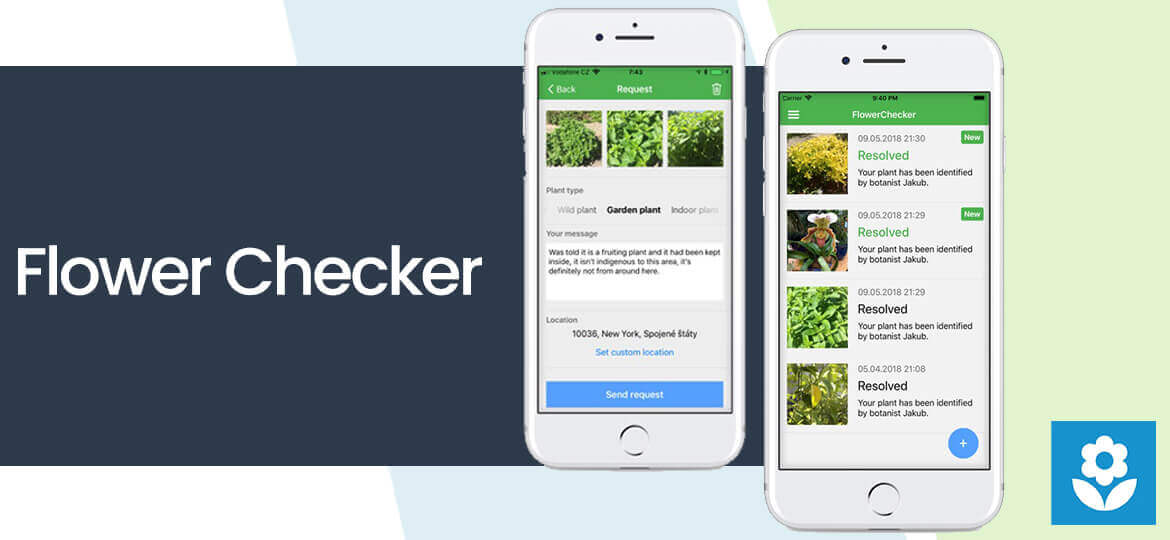
FlowerChecker is one of the most popular plant recognition applications for identifying flowers. It works as a service. The process is not free. They claim that it is because humans identify plants and not a computer algorithm. Therefore, the money goes to pay these people.
- Send a picture of a flower and an expert tells you what it is.
- Each identification will cost about $ 1.
- The application is also probably more useful for those flowers that simply can not be found in a Google search.
PictureThis
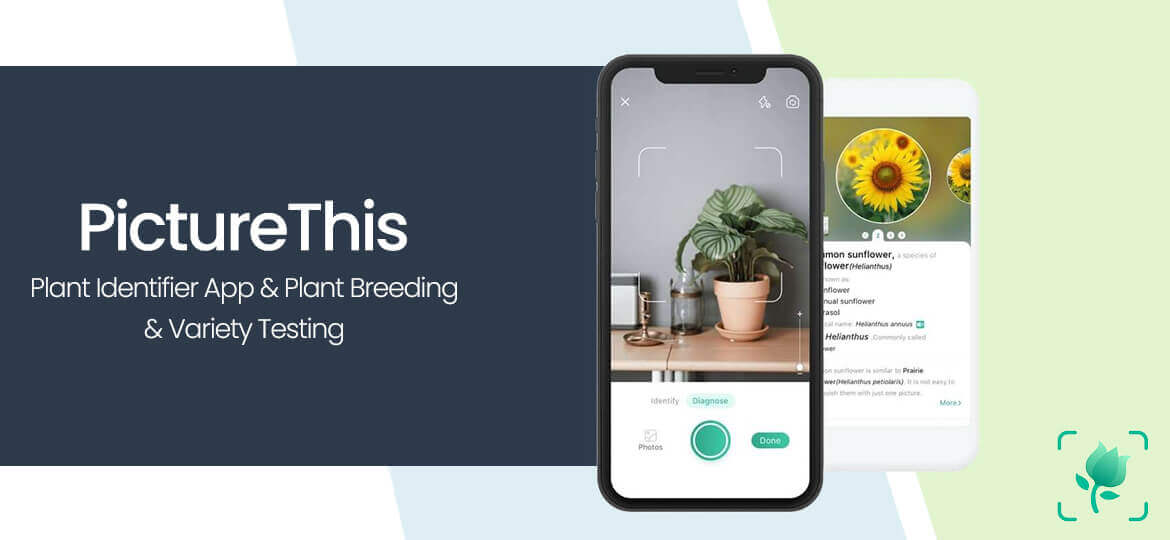
PictureThis is one of the newest applications for identifying unknown plants. It works a bit like Google glasses and similar applications.
To identify take a picture of a flower, plant, berry, whatever. The application then uses photography to identify it for you.
- Unlike FlowerChecker, it uses computer algorithms rather than the hand of man.
- However, in general, the application actually seems to work pretty well. It has a database of thousands of plants, advice columns, and more.
- There is a paid version that unlocks all the features, but you get some stuff for free.
Garden Answers

Take a photo of a plant or upload one from your phone. The application will then provide multiple options from where you can choose the best match. After the selection, the application provides detailed information about the plant.
- You must create an account and log in to use this application (or you can choose to log in through Facebook).
- You can also link your profile options if desired.
What’s That Flower
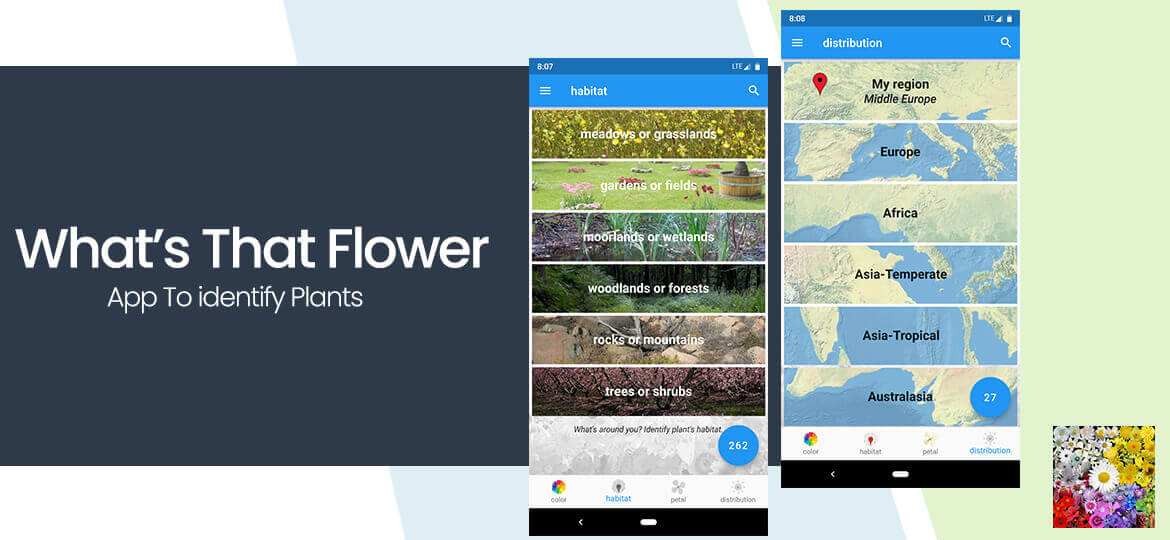
Instead of using a photo, you start by selecting the color of the plant you want to identify. Then select the habitat where the flower was displayed, and then the number of petals. After this, you will be presented with several possible options.
- This plant finder application, which is only available for Android devices, works a little differently than most other apps.
- This application can be useful when you see a flower, but can not take a picture of it.
SmartPlant
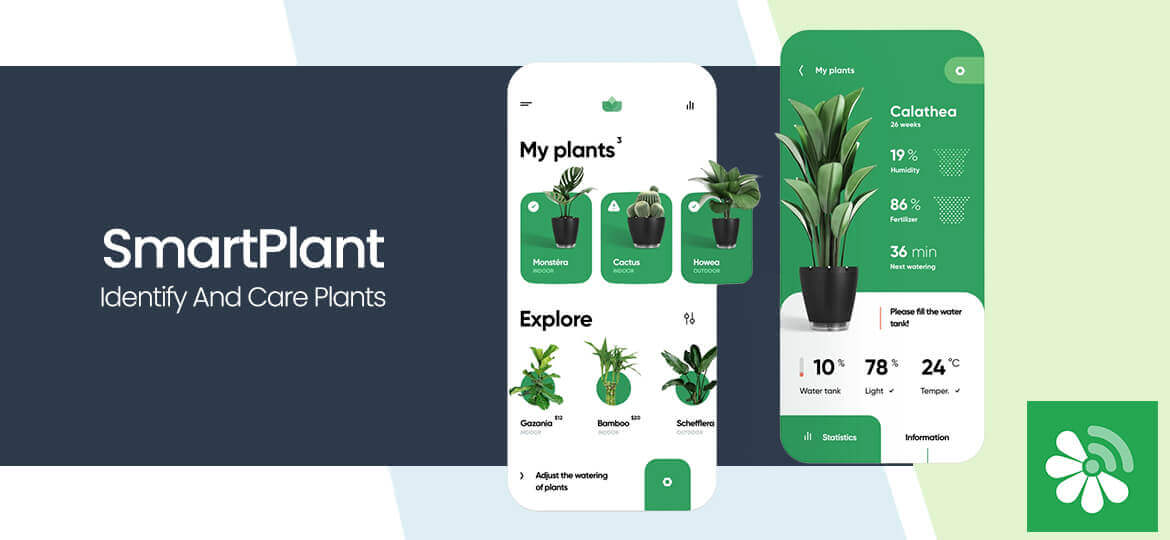
You have the option to take a photo or select one from your gallery. The image is sent to experts trying to identify flowers, leaves, or trees. The application is free to download, and photo slideshows receive two free downloading of the application.
- You will receive a free ID per month, although you can buy more or upgrade to the paid version.
- This is not an instantaneous process If you have an unusual plant, professional help might be worth the wait.
GardenTags
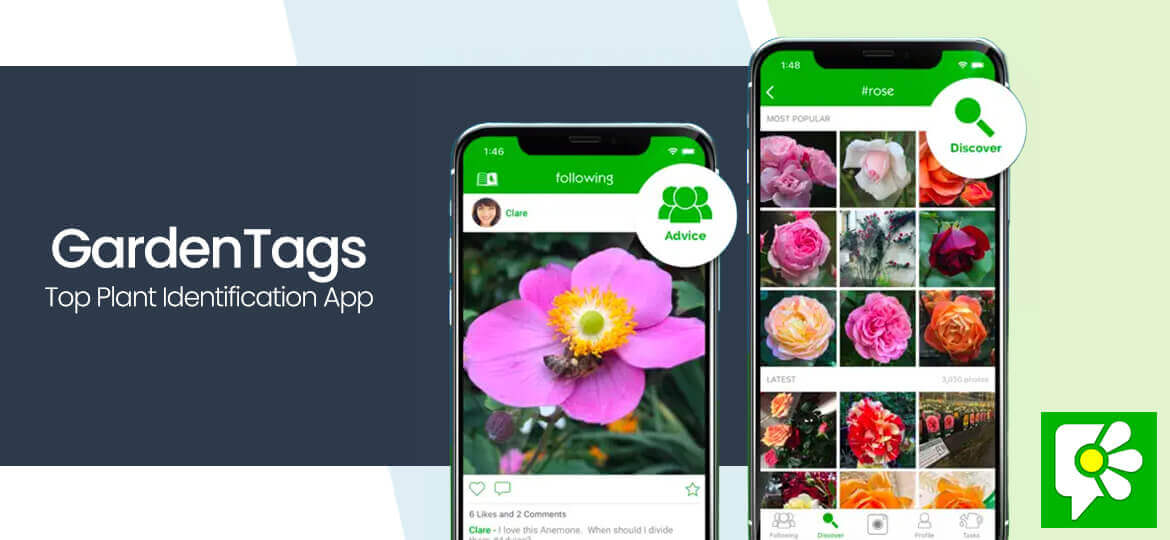
GardenTags is more than just an application of plant identification. However, if you want to use it to find out what type of plant or flower that you found, you can upload a photo and ask the community to help you make an identification.
- Think of it as crowdsourcing plant information.
- You can also upgrade to the paid version for other functions, such as creating a magazine and establishing gardening tasks.
- After registration, you can catalog your garden and find inspiration from other garden designs.
Who Can Use ?
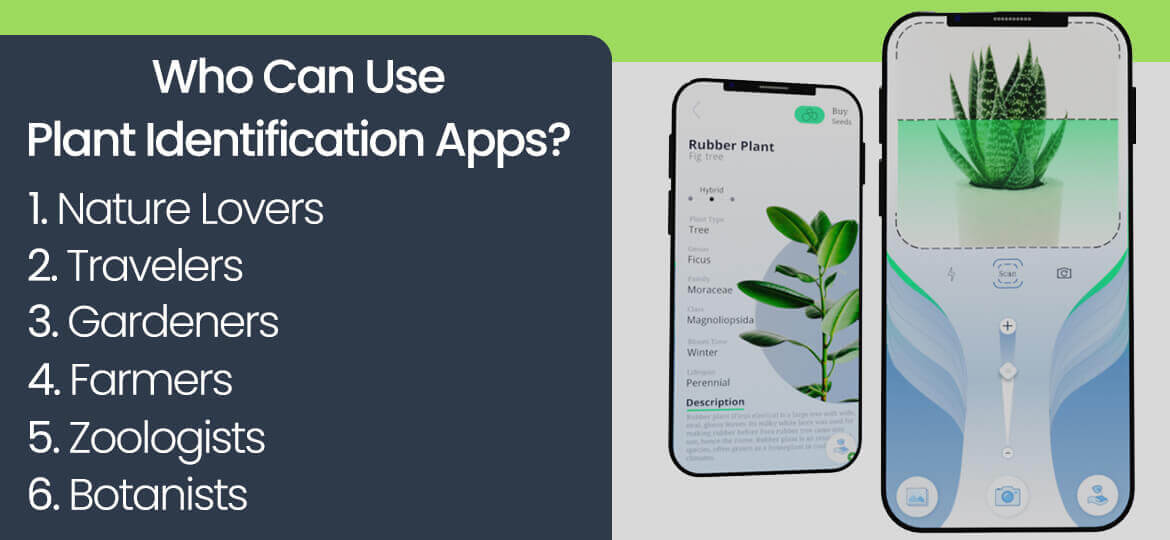
Here is the list of all types of people who can use the plant identification apps.
Nature Lovers
- Nature lovers always look forward to discovering different nuances of nature.
- With plant identification applications, they get to know everything about a plant without the help of an expert.
- These applications have a strong database of n number of plants, trees, and flowers that helps nature lovers to know things.
Travelers
- Wildlife travelers visit the forests frequently where they find lots of plants and trees.
- They are willing to explore the plants only by their curiosity and interest. On the other hand, they need to learn about the usefulness of different plants to use in a medical emergency.
Gardeners
- If you are fond of gardening, then plant identification applications enrich your knowledge regarding trees, plants, flowers, fruits, leaves, etc.
- You can use a plant ID app everywhere.
- You can use it in a nursery and buy a plant of interest after all data such as the name of the plant, source, availability worldwide, ease of use, and more.
Farmers
- Farmers can have access to all the information regarding an unknown seed, plant, tree, or fruit in a few minutes using plant identification apps.
- They can also get every little detail about different leaves and pests on the leaves.
- Applications allow farmers to make an informed decision about which crop can be harvested.
Zoologists
- Zoologists have to check the nutrition in fruits or vegetables before considering them for animals.
- Plants, tree branches, and flowers are eaten by animals.
- To keep pets and animals healthy, zoologists have to feed them well.
- Using applications for plant identification can help zoologists meet the specific requirements of each animal food available at the zoo.
Botanists
- Botany is a stream of education where students learn about endangered spices, plants, and other natural areas.
- With these applications, students can access basic information about plants with just a tap.
- Once you have an overview of a tree or a flower or a fruit, it will be easy for you to get more details.
- Such applications make the most interesting and exciting study for students attending to their queries quickly.
Features To Have In Your Plant Identification App
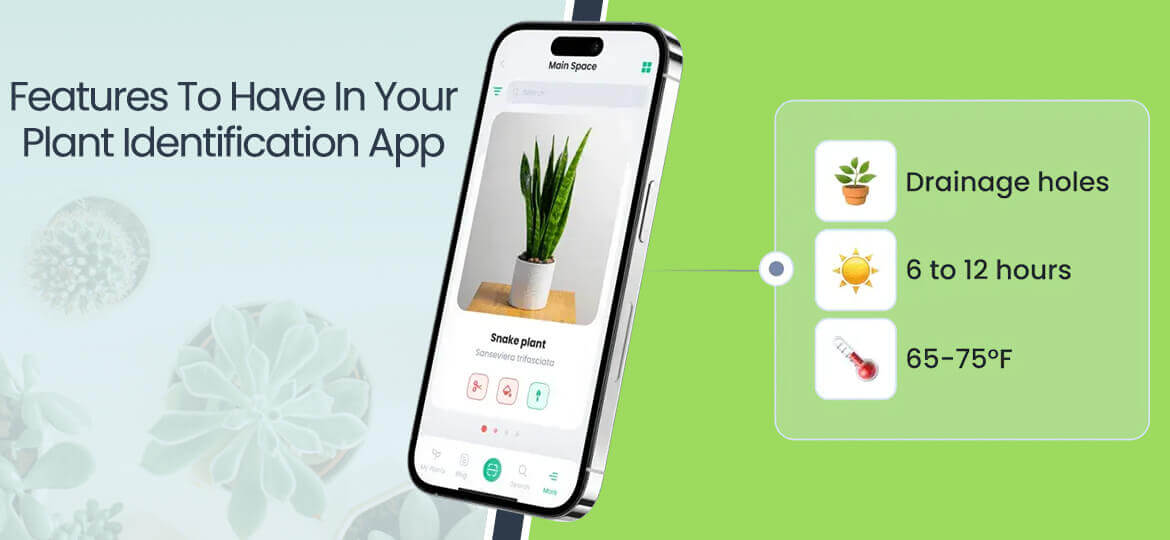
Having an app for plant identification is a totally new concept. However, it is an undeniable fact that it is a very useful app. Here are some of the best features that you should have in your plant identification app without fail.
Plant Identification by Fetching Data from Database
Once you upload the plant picture in the plant identifier app, the app to identify plants begins searching for relevant results. An integrated image recognition engine processes the image, providing accurate plant identification by fetching information from its database and displaying all possible matches on the screen.
Users can find the exact plant ID match and explore more details about the plant. For those seeking a free plant identifier app, there are several great options, including a free app for Android phones available for plant identification, allowing users to easily identify plants without any cost.
Geo-Tagging
The applications allow users to add locations when and where they found a particular plant with the help of a geo-tagging feature.
Complete Details about the Plant
The plant identification applications enable users with all information related to the plants such as leaves, fruits, group & family they belong to, origin, scientific names, popular names, growth habits, description, and other details.
Conclusion: Choose the Best App for Your Needs
Whether you’re identifying plants in your backyard or contributing to a citizen science project, plant identification apps offer a wealth of features. From free plant identifier apps to premium tools for identifying trees and diagnosing plant diseases, the options are endless. By leveraging these apps, you can better understand and preserve the world’s plant biodiversity.
Since plant identification app development can be so useful for gardening and studying botanical subjects, developing a plant identifier app can be very rewarding.
However, to create a plant identification app, it is indeed necessary to consult a top mobile app development company who has adequate experience. Echoinnovate IT is there to provide free consultation on your idea to make plant identifier.
Their developers are apt in creating top plant identification apps in minimum timeframe. Hence, if you have queries regarding plant identification development cost, how plant identification works or how to develop a plant identifier app, you can contact us at info@echoinnovateit.com.
FAQs
How Do Apps Identify Plants?
Plant identification apps use photo recognition software that analyzes leaves and bark to identify plants based on their common characteristics.
How Accurate Are Plant Identification Apps?
The accuracy of plant identification apps varies, but studies have shown that they are generally pretty good at identifying plants at the genus level using leaf images, with accuracy rates ranging from 71.8% to 97.3%. However, their accuracy in identifying specific plant species using leaf pictures is not always as high, with rates ranging from 40.9% to 83.9%.
Do Plant Apps Identify Weeds?
Yes, plant apps can identify weeds along with other types of plants. Simply take a photo of the weed and let the app analyze it. It’s an easy way to determine if the weed in your garden is a dandelion or something more harmful.
How Much Does A Plant Identification Development Cost?
As the cost of developing a plant identification app can vary widely depending on numerous factors, it’s difficult to give an exact number. However, to give a rough estimate, a basic plant identification app may cost around $10,000 to $30,000 to develop, while a more advanced app with additional features could cost upwards of $50,000 or more.
What are the best SEO tips for USA websites in 2025?
Use local SEO strategies.
Optimize for Google’s AI-driven search results.
Target USA high-traffic keywords like “Google SEO update 2025,” “AI SEO tools USA,” “how to rank on Google fast,” and “latest SEO ranking factors USA.”
What keywords should I target for high traffic in 2025?
Focus on “SEO tips for USA websites 2025,” “helpful content update SEO,” “AI SEO tools USA,” “Google algorithm update July 2025,” and “how to rank higher on Google USA.”
How can I optimize for featured snippets in 2025?
Use FAQ sections, bullet points, and concise answers to rank in Google’s position zero.
How do Core Web Vitals affect rankings?
Websites with strong LCP, CLS, and INP scores rank higher in Google search results.
